Active Listening Worksheets Results
Workbook Skills WholePerson
• Active Listening Scale helps individuals determine how effectively they listen when communicating. • Nonverbal Communications Scale helps individuals examine how their body language is affecting their interpersonal communications. • Communications Skills Scale helps individuals measure how effective they are at using
https://url.theworksheets.com/7v72876 Downloads
Preview and Download !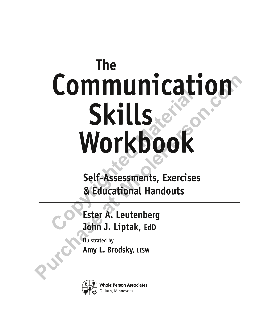

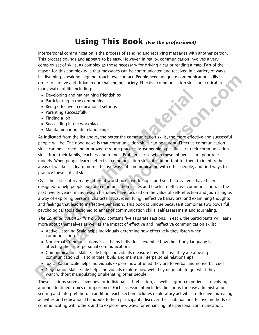
Active Listening Techniques - Smart Union
Active Listening Techniques . Active Listening skills are an essential component of effective communication. This handout provides you with active listening techniques and communication enhancers and blockers that can help you improve your active listening skills. SIX ACTIVE LISTENING TECHNIQUES . TYPE OF STATEMENT PURPOSE TO ACHIEVE PURPOSE ...
https://url.theworksheets.com/7u8706 Downloads
Preview and Download !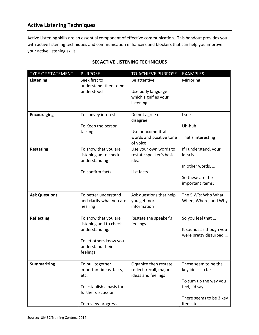
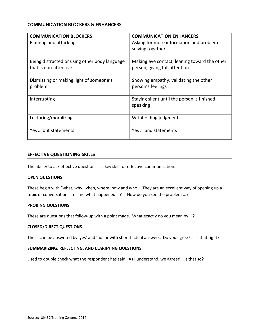

WP1012 Active Listening - McGill University
active listening is hard work and needs 100% of your concentration); o Don’t finish their sentences or fill in the blanks – no matter how tempting! • Notice non-verbal communication ie, body language, tone and pitch of the voice – listen for feelings
https://url.theworksheets.com/7uf574 Downloads
Preview and Download !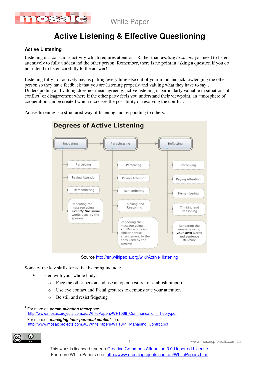
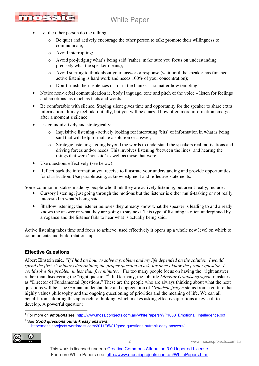
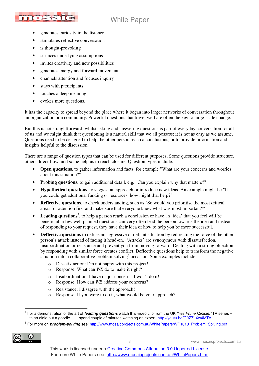
Worksheet Active Listening Techniques
Unit: Listening Skill 15: Active Listening Activity A: How To Listen Worksheet An EEO/AA employer, University of Wisconsin-Extension provides equal opportunities in employment and programming, including Title IX and American with Disabilities (ADA) requirements. UW-Extension, Quad Counties, 161 West Wisconsin AV, Suite 6000, Milwaukee, WI 53203.
https://url.theworksheets.com/7uh526 Downloads
Preview and Download !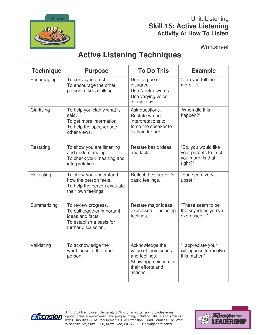
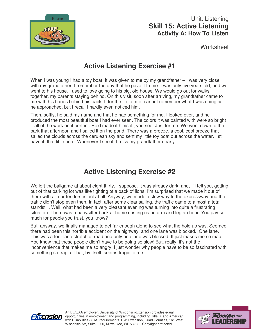

Active Listening Activity ( 10 min )
There are five key elements of active listening. Full Listening Use your own body language and gestures to convey your attention. Look at the speaker directly. Nod occasionally. Smile and use other facial expressions. Note your posture and make sure it is open and inviting.
https://url.theworksheets.com/7un605 Downloads
Preview and Download !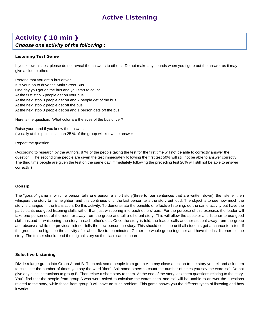
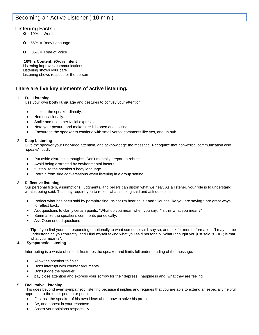
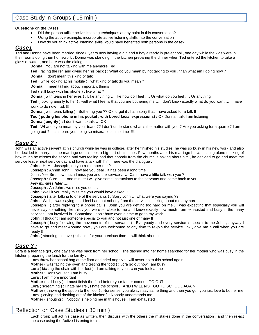
Developing Effective LISTENING SKILLS
of Effective Listening Skills. The three modes, or manners, of listening are Attentive, Responsive, and Active. The four levels of listening are Factual, Perceptive, Emotional, and Mixed. We’ll highlight each area to help increase your listening accuracy and reduce the opportunity for misunderstanding. Developing Effective Listening Skills 3
https://url.theworksheets.com/7uc471 Downloads
Preview and Download !
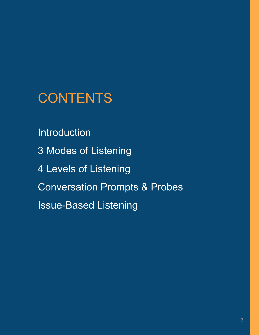
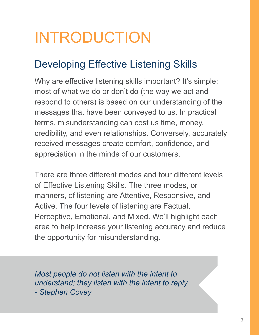
Active Listening: Communication Skill - Therapist Aid
Active Listening: Treating listening as an active process, rather than a passive one. This means participating in conversation, rather than acting as an audience. Active listeners show they are listening, encourage sharing, and strive to understand the speaker. Show You’re Listening Put away distractions.
https://url.theworksheets.com/jeu294 Downloads
Preview and Download !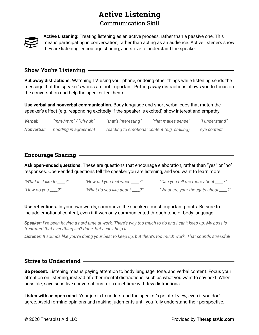


Active Listening - University of Adelaide
Active Listening Writing Centre Learning Guide At university, active listening during lecture and tutorial sessions is an important skill that you will need to improve and/or develop. Often when people talk to each other, they are only half-listening. Active listening is, however, a way of paying attention
https://url.theworksheets.com/2t5z184 Downloads
Preview and Download !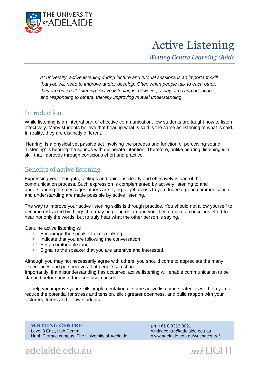
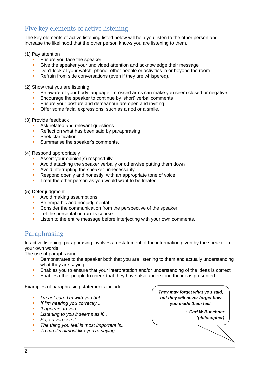
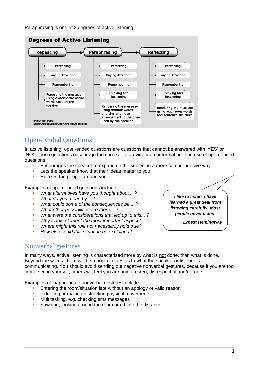
Entree Unit: Listening Skill 15: Active Listening
Begin by passing out worksheets to each participant. Discuss active listening for 5-10 minutes, reviewing and explaining each of the six actions that should be taken while listening. Split participants into two groups, and have them pair off with a person in the opposite group. When paired off, the groups begin by having one
https://url.theworksheets.com/fvv171 Downloads
Preview and Download !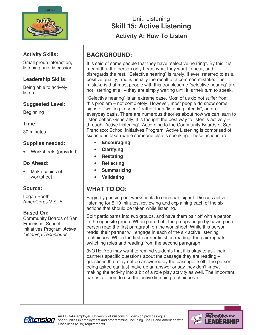
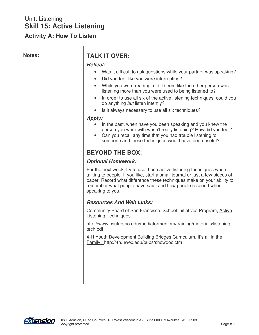

Worksheet for Active Listening - Teen Talk
Active Listening Worksheet Paraphrasethe following statements. This means putting into your own words what someone else said. Example: I used to go out with my friends all the time, but lately I don’t want to. They’ve started drinking beer a lot more and I’m not into that. It seems like they can’t have a good time without it.
https://url.theworksheets.com/3ol3198 Downloads
Preview and Download !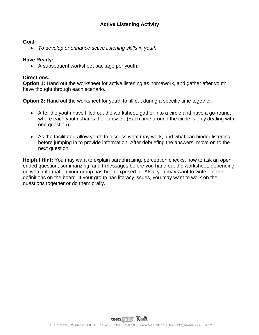

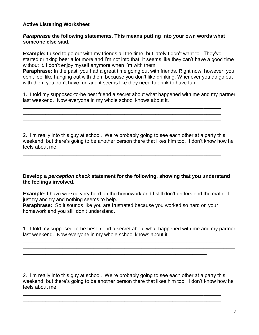
Next results >>